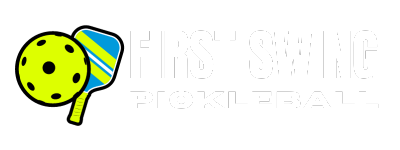

Pickleball and Corporate Wellness: The Rise of a New Trend in Employee Health
Introduction
In recent years, corporate wellness programs have gained immense popularity as businesses recognize the importance of their employees' health and well-being. Amidst various wellness initiatives, pickleball, a paddleball sport that combines elements of badminton, table tennis, and tennis, has emerged as a novel and exciting addition. This article delves into the concept of incorporating pickleball into employee wellness programs, exploring its benefits, implementation strategies, and potential impact on workplace health and morale.
The Surge in Popularity of Pickleball
Historical Background and Recent Growth
- Brief History: Originating in the mid-1960s, pickleball has evolved from a backyard family activity to a sport enjoyed by millions.
- Current Trends: In recent years, the sport has seen a dramatic increase in popularity, with communities and organizations embracing it for its accessibility and social aspects.
Key Elements of the Game
- Gameplay: Combines elements of tennis, badminton, and table tennis.
- Equipment: Simple - a paddle and a plastic ball with holes.
- Rules: Easy to learn, making it inclusive for all skill levels.
Benefits of Pickleball in Corporate Wellness
Physical Health Benefits
- Low-Impact Exercise: Suitable for employees of all ages and fitness levels.
- Cardiovascular Health: Enhances heart health through moderate physical activity.
- Flexibility and Balance: Improves agility, reflexes, and coordination.
Mental Health and Social Benefits
- Stress Reduction: Physical activity helps alleviate work-related stress.
- Team Building: Encourages teamwork and camaraderie among employees.
- Inclusivity: Accessible to a diverse workforce, fostering a sense of belonging.
Implementing Pickleball in Workplace Wellness Programs
Initial Steps and Considerations
- Assessing Interest: Conduct surveys or focus groups to gauge employee interest.
- Finding Space: Utilize existing spaces or partner with local facilities.
- Equipment and Safety: Ensure availability of equipment and adherence to safety protocols.
Strategies for Engagement
- Organize Regular Games and Tournaments: Foster a sense of competition and fun.
- Offer Instructional Sessions: Help beginners learn the basics.
- Incorporate Health Challenges: Link pickleball activities to broader wellness goals.
Potential Challenges and Solutions
Addressing Barriers to Participation
- Scheduling Conflicts: Offer flexible playing times to accommodate different work schedules.
- Physical Limitations: Adapt the game for varying physical abilities.
- Promoting Continued Interest: Keep the program dynamic with regular updates and incentives.
Case Studies: Successful Corporate Pickleball Programs
Examples of Businesses Benefiting from Pickleball
- Case Study 1: A tech company that witnessed improved team dynamics.
- Case Study 2: A healthcare provider that saw a decrease in employee stress levels.
FAQs
Q: Do employees need prior experience in racquet sports to play pickleball? A: No, pickleball is beginner-friendly and can be enjoyed by individuals without any background in racquet sports.
Q: How can a company measure the success of a pickleball wellness program? A: Success can be measured through employee participation rates, feedback surveys, and monitoring changes in workplace morale and health indicators.
Q: Can pickleball be played indoors and outdoors? A: Yes, pickleball courts can be set up both indoors and outdoors, making it a versatile addition to wellness programs.
Conclusion
Pickleball offers a unique and engaging way to enhance corporate wellness programs. Its blend of physical activity, stress reduction, and team building makes it an ideal choice for companies looking to invest in their employees' health and well-being. With strategic implementation and ongoing engagement, pickleball can significantly contribute to a healthier, more cohesive workplace.








